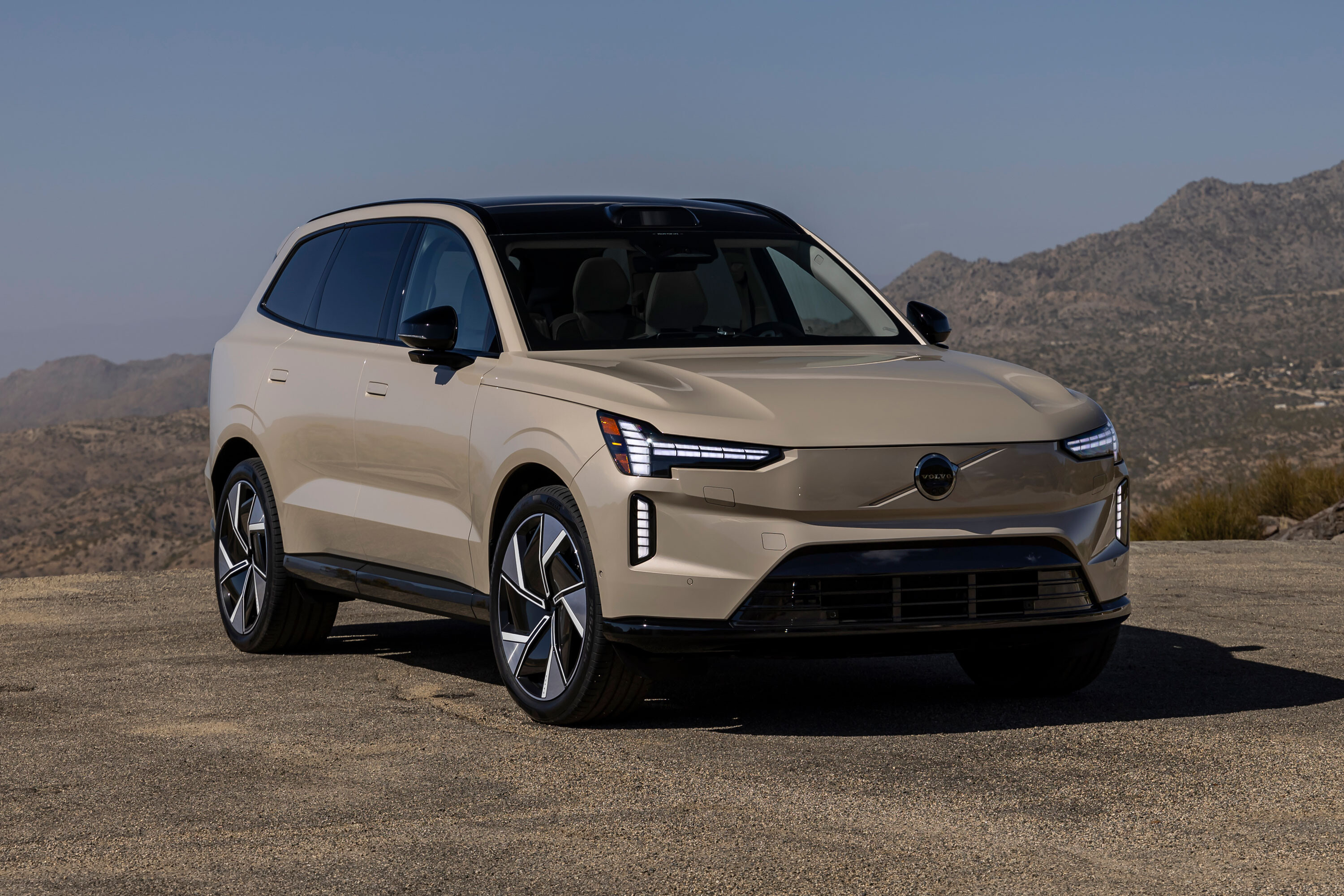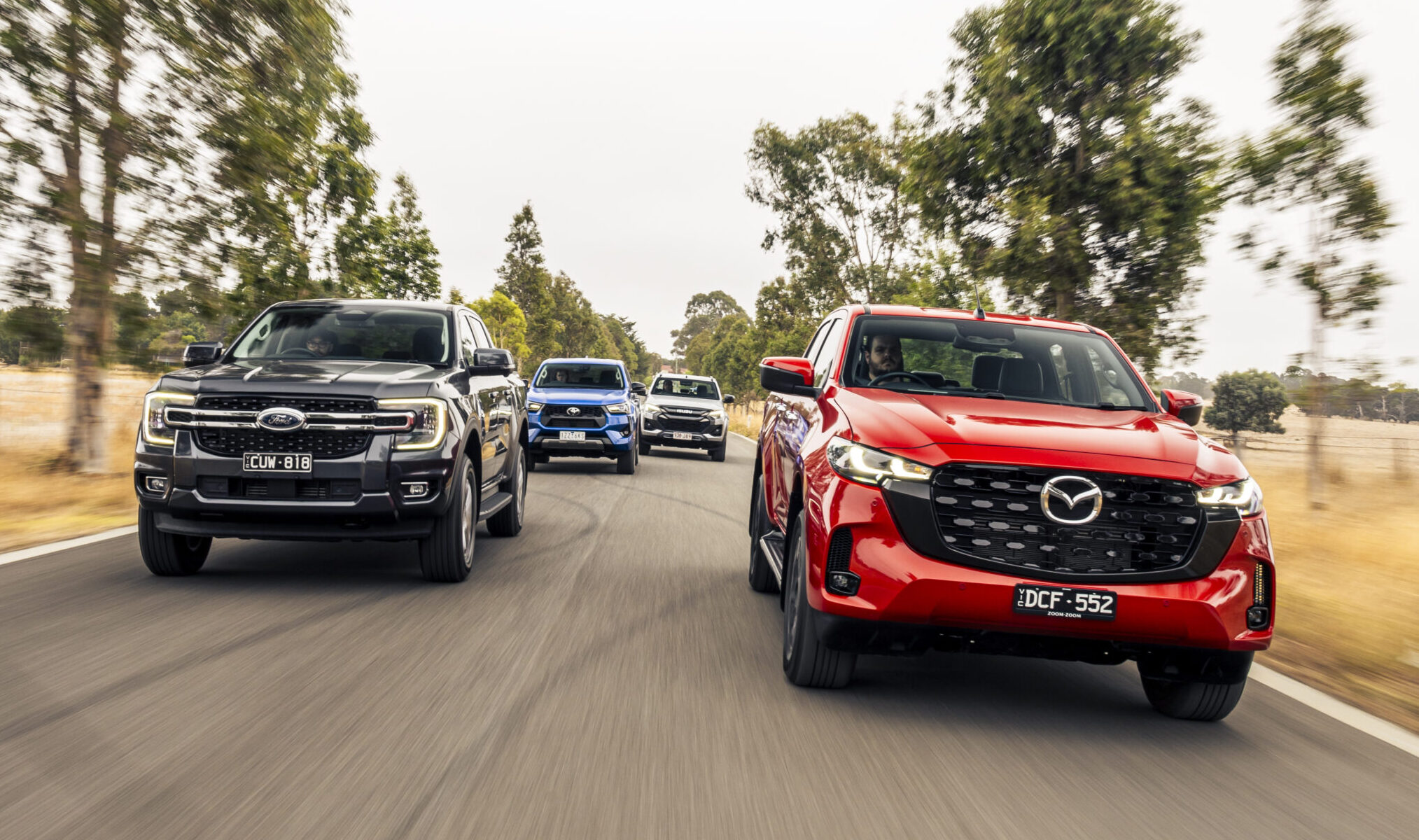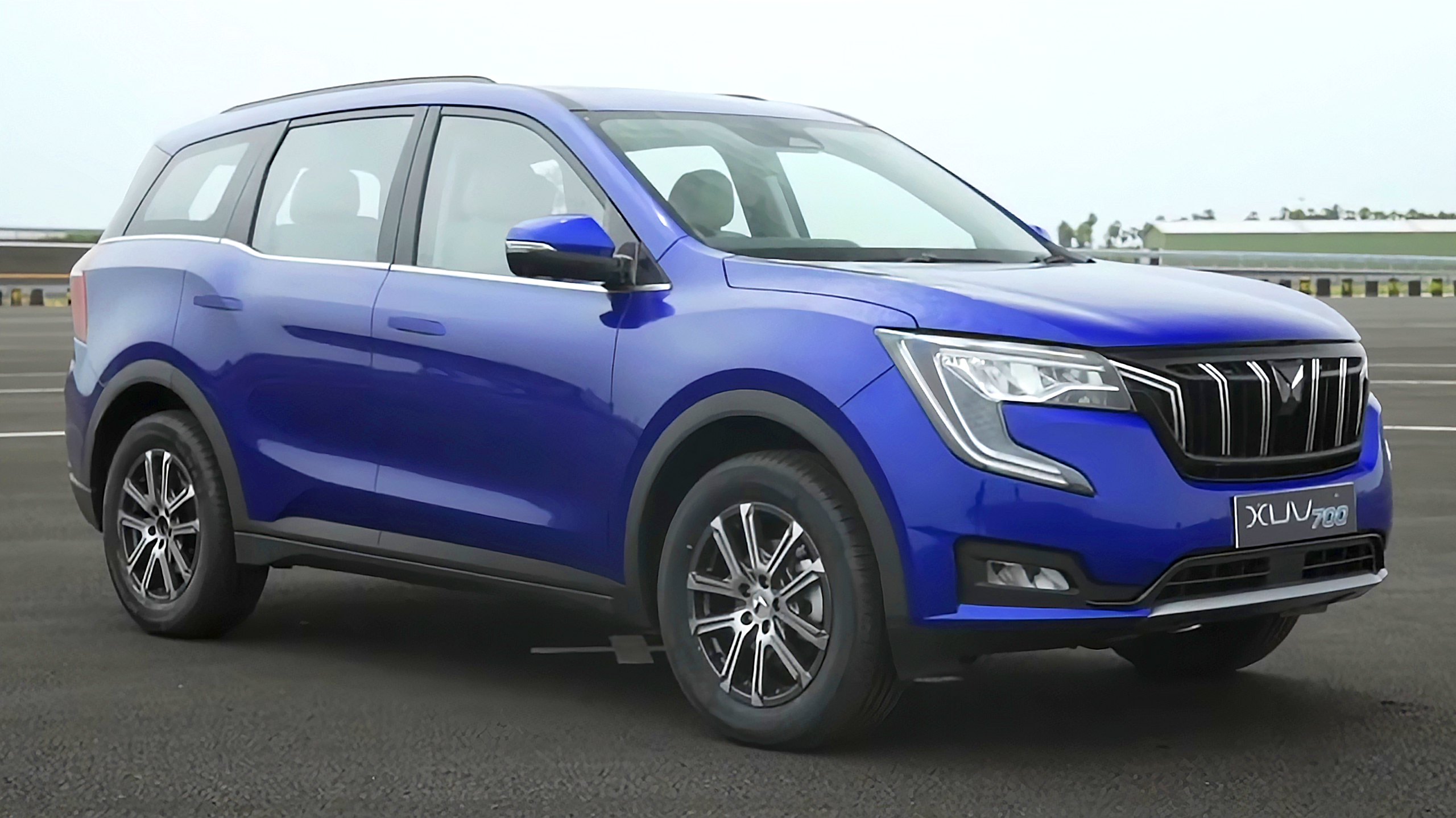Score breakdown
Things we like
- Persuasive ride/handling blend
- Interesting cabin design and materials
- Competitive performance and range
- Plenty of luggage space
Not so much
- Feels cost-cut in some areas
- Lacks XC90’s cabin storage
- Average room for a seven-seater
- Derivative styling
For a brand that once hedged its reputation on bulletproof, boxy, pragmatic station wagons, Volvo has pivoted on that family-friendly ideal and very successfully transitioned into mastering large, seven-seat premium SUVs.
The two generations of XC90 that preceded this all-new, all-electric seven-seat EX90 each matured beautifully – improving over time to become almost a default purchase for premium-brand family buyers chasing safety, surety and space.
And now we have yet another Swedish pivot on the notion of family mobility with the XC90-inspired EX90, which will launch in Australia later this year.
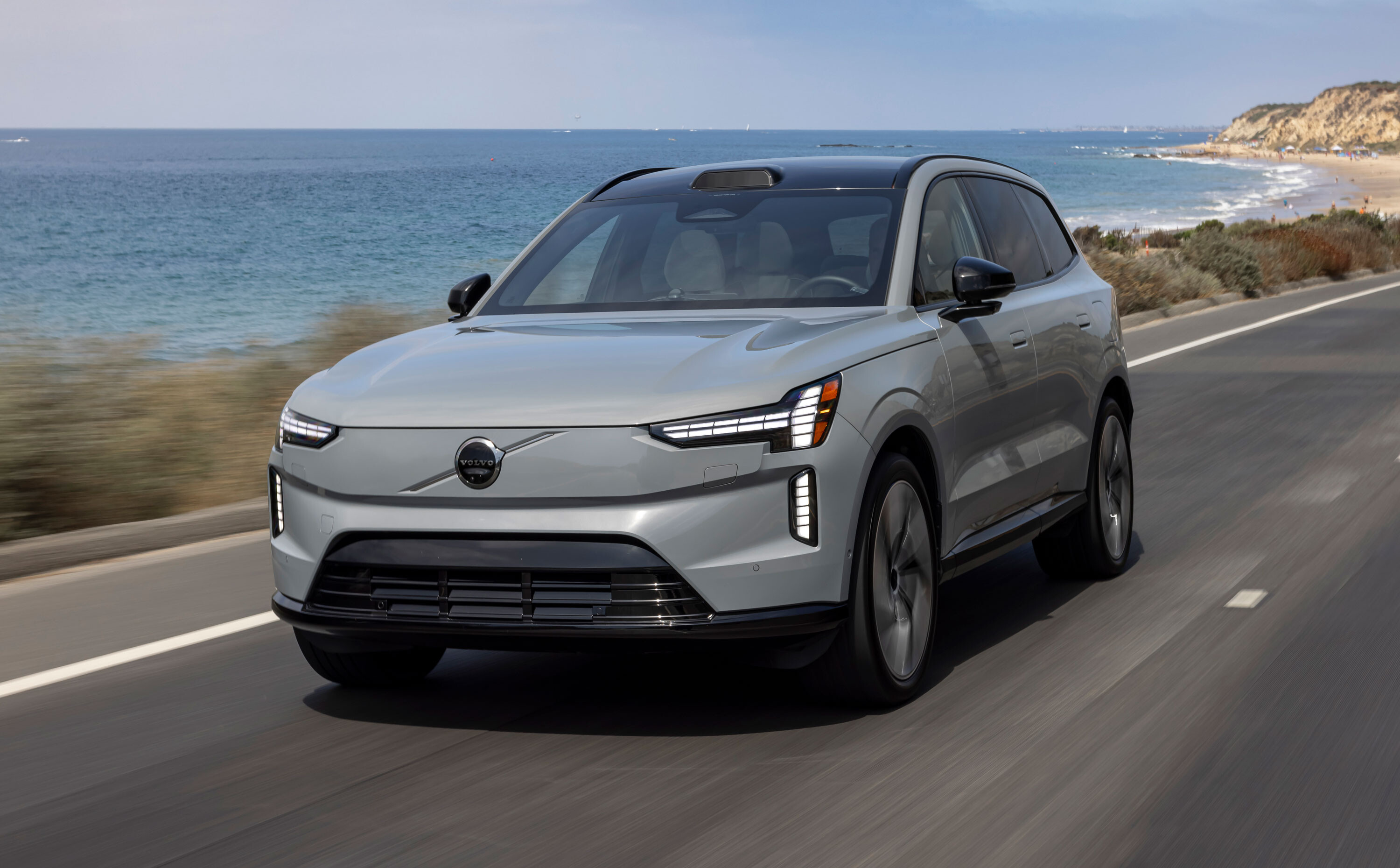
JUMP AHEAD
- Is the 2024 Volvo EX90 worth my attention?
- What about inside?
- What powers the Volvo EX90?
- How does it drive?
- Is it worth waiting for the 2024 Volvo EX90?
Is the 2024 Volvo EX90 worth my attention?
Externally, the EX90 is clearly an evolution of the now decade-old second-gen XC90. The body shape, door apertures, window line – it’s all familiar Volvo DNA. And in 2024, perhaps too familiar for a tech leader such as this when its five-seat relative – the Polestar 3 – looks so damn striking from almost every angle.
The EX90’s front three-quarter aspect conveys a clean, handsome, modern visage, but its rear-end view is perhaps not so flattering – especially the dorky dotted lights that bookend the tailgate glass, making the EX90 look tall and narrow from behind. Which it isn’t.
Dimensionally, it’s very close to its combustion-engined predecessor – meaning a near-identical 2985mm wheelbase, similar 5037mm length (+87mm) and 1964mm width (+41mm), and marginally lower 1747mm height (-28mm).
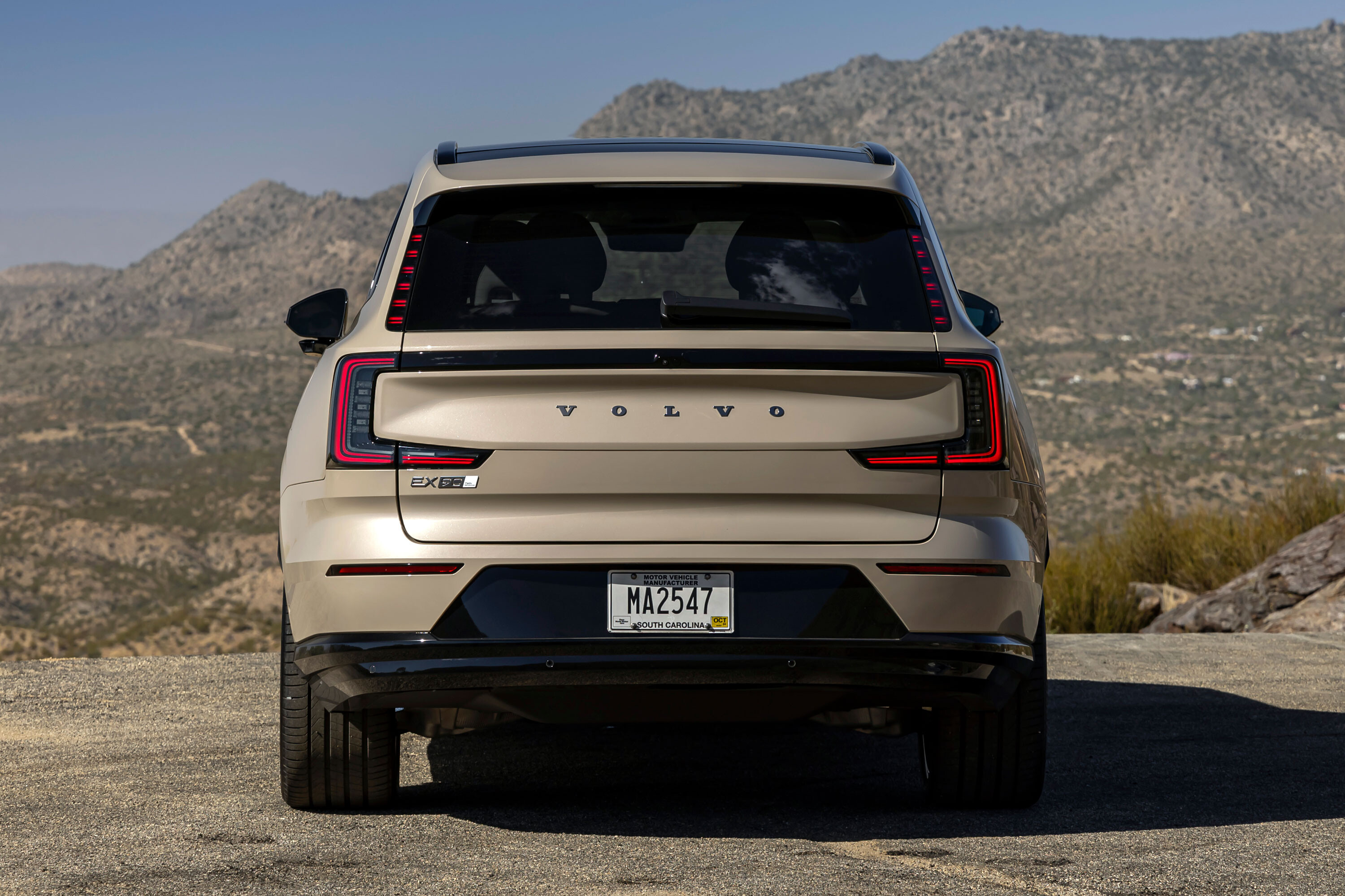
But proportionally, that puts the EX90 at odds with the current seven-seat EV benchmark – the Kia EV9 – which is slightly shorter than the Volvo but rides on a much longer wheelbase (3100mm) for significant gains in packaging space and cabin flexibility, and has a broader stance on the road.
The EX90 comfortably one-ups the EV9 with its wheel size though – our top-spec EX90 Ultra Performance wearing 22-inch alloys with staggered-width Pirelli Scorpion tyres, the rear pair being enormous, sports-car-rivalling 295/35R22s.
And it also features adaptive air suspension with dual-chamber air springs, as well as an excellent torque-vectoring dual-clutch rear axle – giving the dual-motor EX90 flagship the mechanical hardware to achieve a premium level of dynamic sophistication and cohesion.
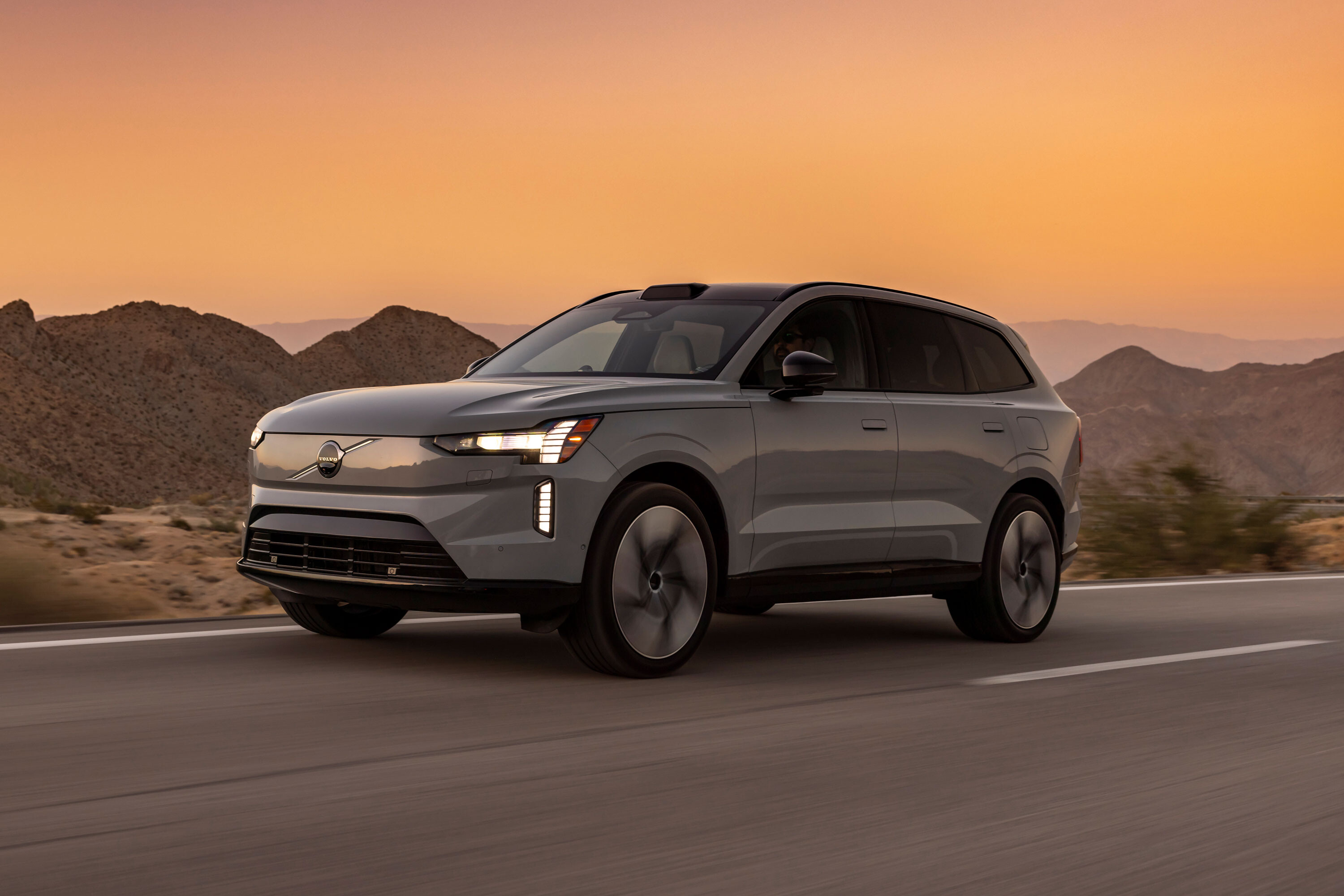
What about inside?
As for whether the EX90 can pull off a genuinely premium feel inside, in the same way its Polestar 3 relative can, that’s probably a matter of priorities.
On the surface, its tactile finishes, slick digital screens, subtle light-coloured wood inlays and our test car’s (100% sustainable) Wool Blend upholstery neatly combine classy tech with textural warmth.
The seat trim, in particular, has an almost mid-century vibe about it, seemingly inspired by the grey suit worn by Kim Novak’s Madeleine Elster/Judy Barton character in Hitchcock’s 1958 masterpiece Vertigo.
But then the leather-like, diamond-stitched Nordic Dawn alternative also looks suitably luxe, especially when combined with a light-coloured two-tone steering wheel. And that demure blonde wood turns quite racy at night – transforming into a black fishnet pattern with deep yellow backlighting. Talk about surprise and titillate, I mean delight.
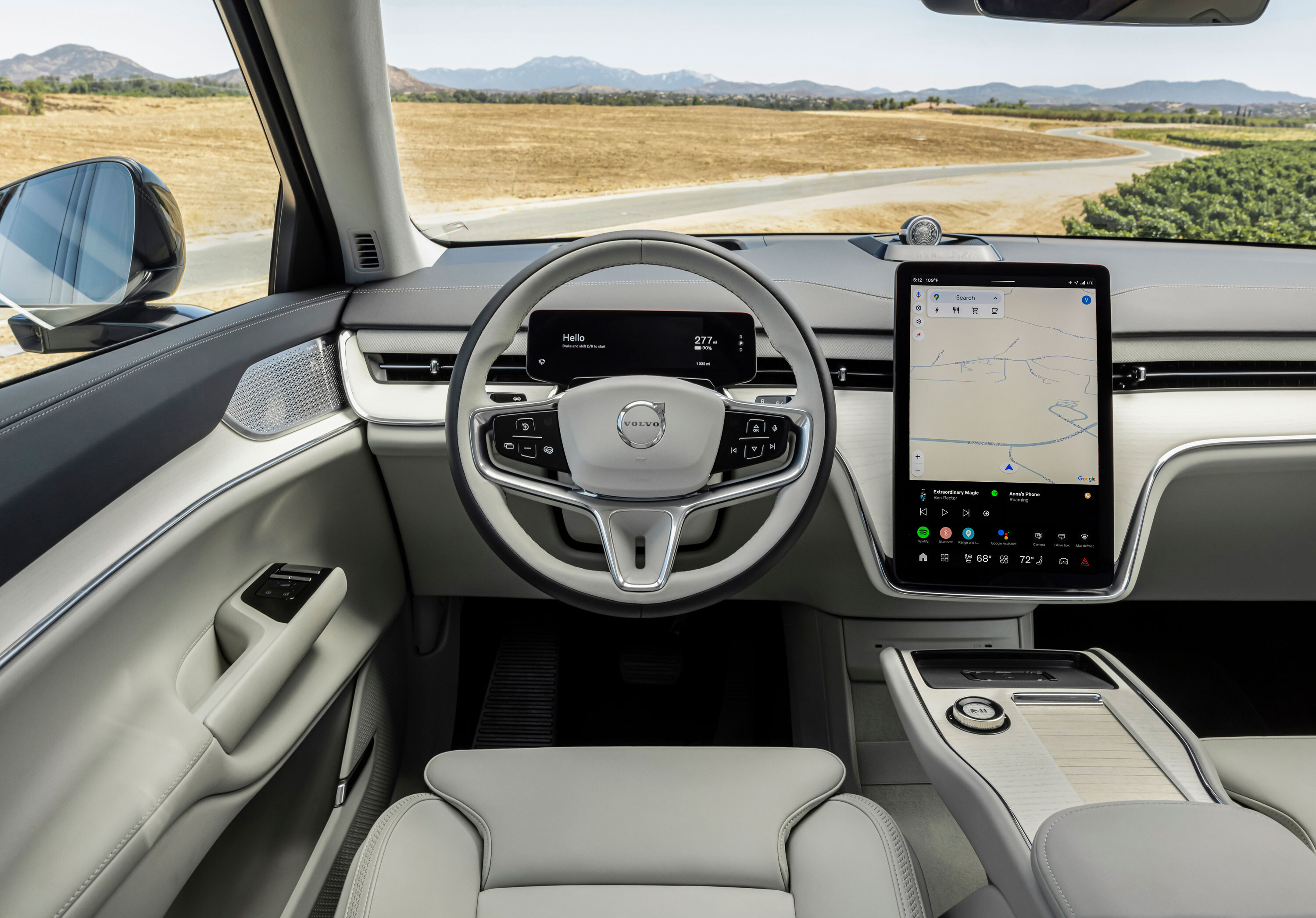
Yet the EX90 betrays Volvo’s cost consciousness in a few areas. The doors don’t close with the expected thunk and are incapable of taking anything beyond a 600ml plastic bottle, unlike the outgoing XC90 which accommodates up to 1.5-litre bottles.
And the EX90 is devoid of the XC90’s proper door grab handles or indeed any overhead grab handles (which feature stitched upholstery in an XC90). Small details, sure, but they detract from both the EX90’s feeling of expense and its utility.
The electric front seats also lack the range of adjustment of an XC90 (there’s no under-thigh tilt, for example), though comfort is still impressive and the minimalist single-dial seat adjuster is the definition of cleverness.
That flavour carries over into the EX90’s column stalks and steering-wheel controls – with each area controlling a simple group of related functions – and its overall interior aesthetic, which is refreshingly light, airy, and highly functional in terms of centre-console storage.
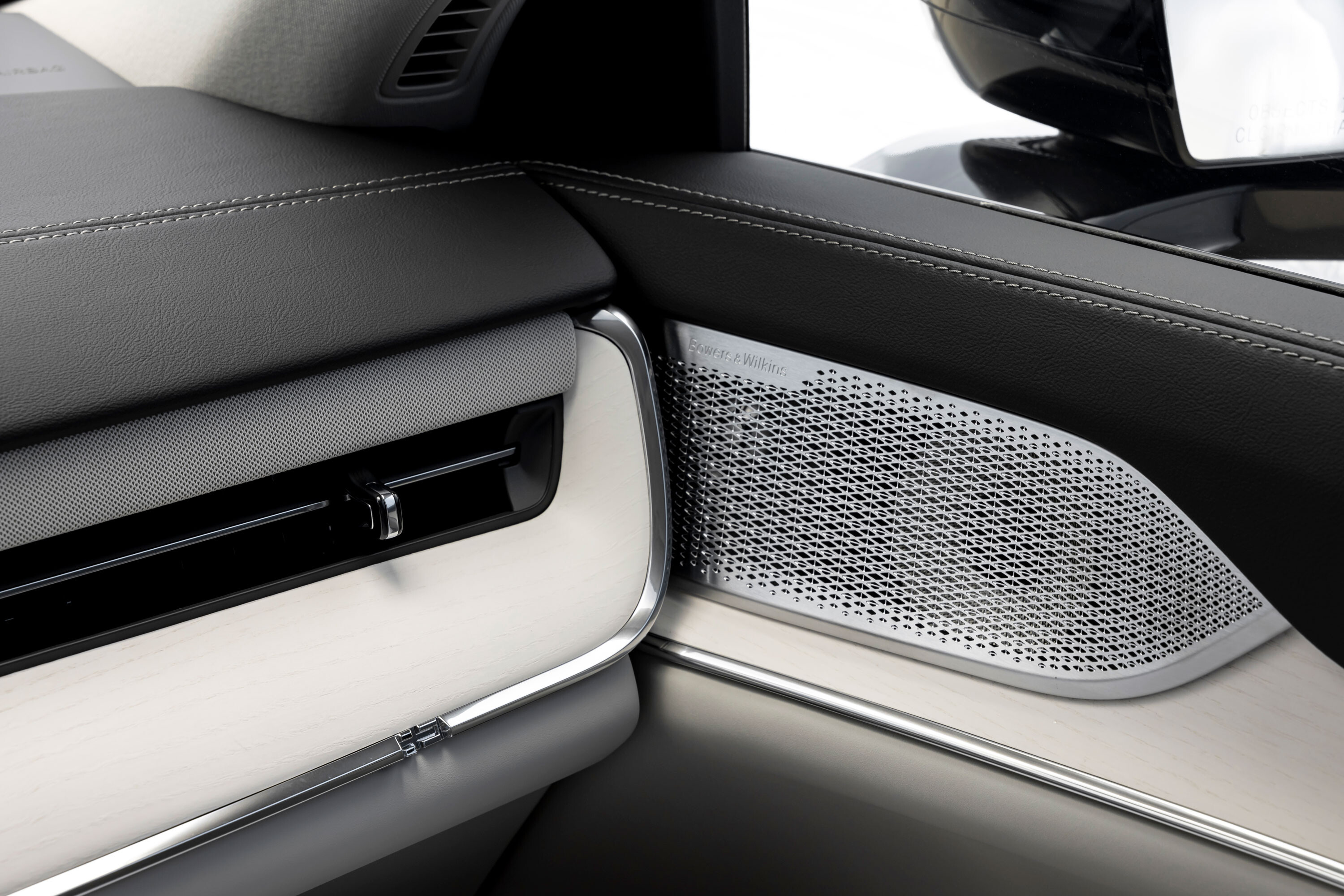
When the superb 25-speaker, 1610-watt Bowers & Wilkins stereo is fitted (like our test car), each door gets Remington Steel-esque speaker grilles, and there’s even a ‘Bowers & Wilkins’ metal sliver on the sides of the front headrests to remind passengers they’re riding in surround-sound heaven.
As for the rest of the tech, I don’t think Volvo’s version of the 14.5-inch portrait touchscreen is quite as seamless and classy as the Poletsar 3’s (though it’s close) and some touchscreen functions (such as suspension modes and even braking regeneration levels) are buried a few layers too deep for aspects that affect the way the EX90 drives.
The second-row operates as three individual seats, each on their own fore-aft sliders, though even the outer pair aren’t as generously sized as, say, the equivalent pair in an Audi Q7.
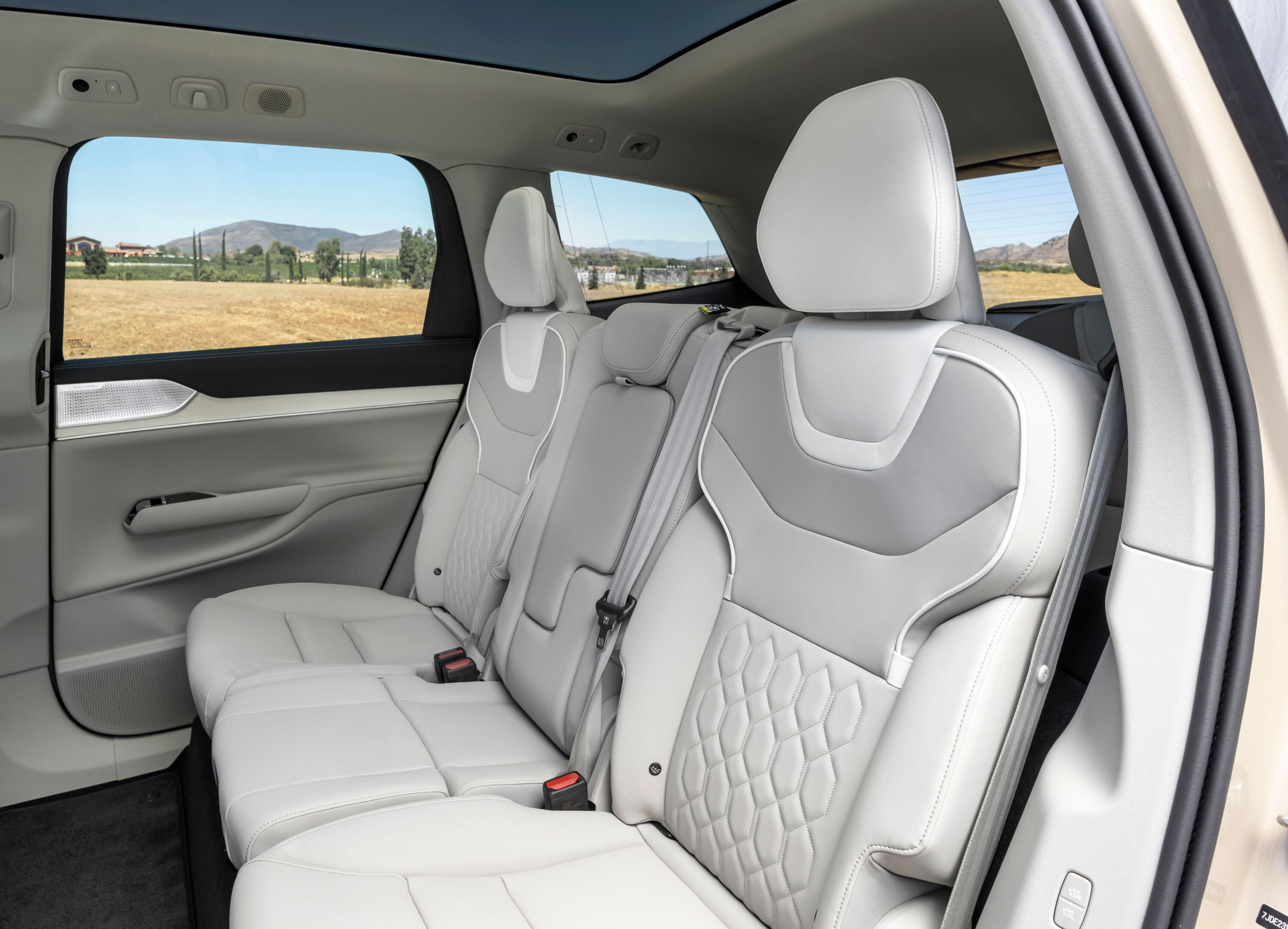
And while there’s a fully flat floor, dual-zone climate control (with centre and B-pillar vents), outboard heating and door sunshades, the range of adjustment for the individual backrests is relatively modest – in contrast to the all-round vision, which is expansive, and enhanced by an all-glass roof (that does introduce a fair amount of heat to the cabin on hot days).
Access to the third row is reasonably deft, even for adults, and that’s mirrored in the space back there, which is doable for grown ups but ultimately intended for children – hence the USB-C ports and C-pillar air vents.
Conveniently, you can electrically lower each third-row seat via buttons in the rear door frames, and when you do, that unlocks 669 litres of boot space (324L, including under-floor storage, with seven seats in use).
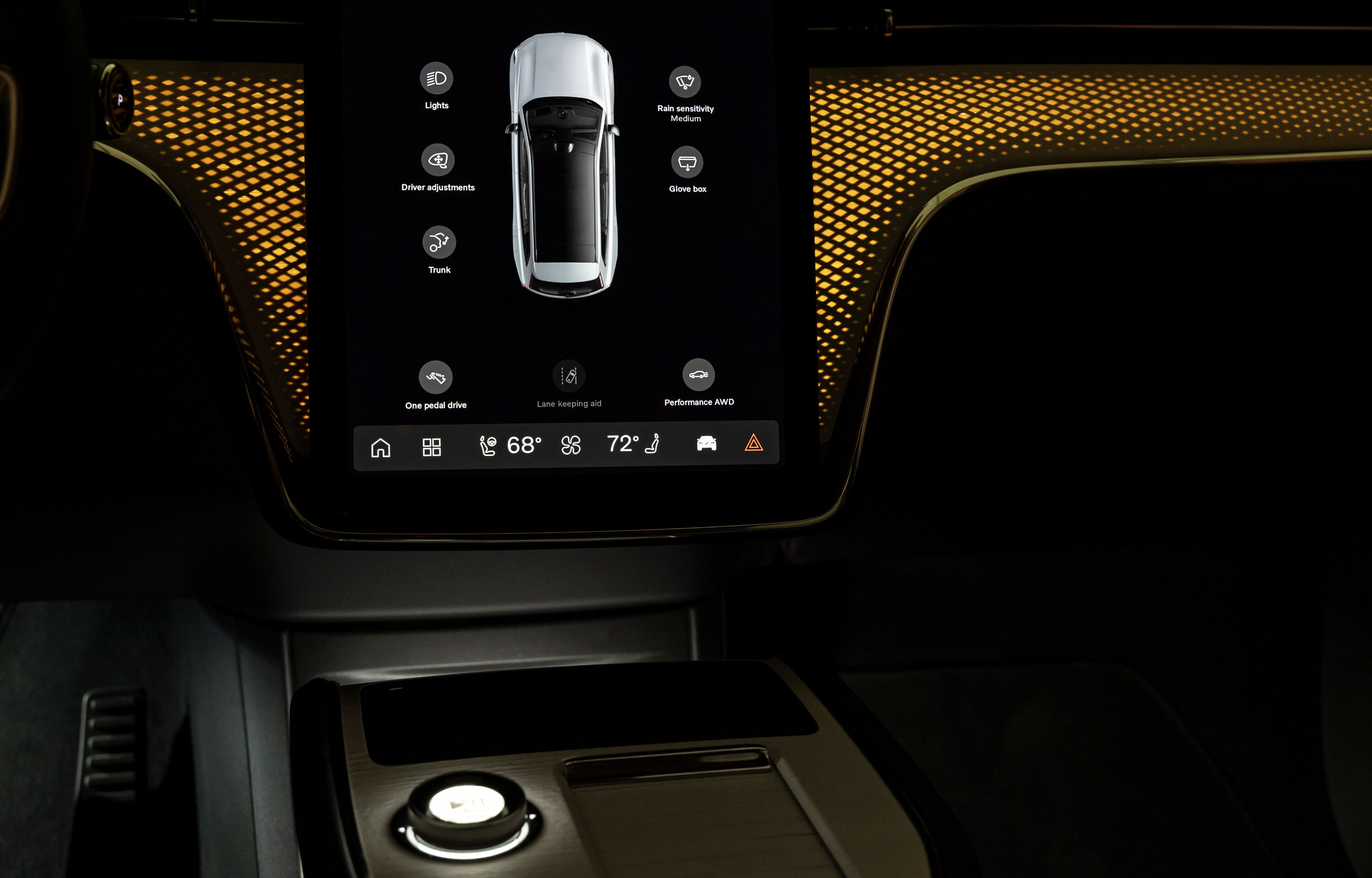
What powers the Volvo EX90?
Despite weighing 2712kg in fully optioned Ultra Performance dual-motor guise, the EX90 is true to its name in offering plenty of punch for an electric seven-seater.
It shares its 400-volt electrical architecture, 111kWh battery, and 380kW/910Nm outputs with the Polestar 3 Performance Pack, and that’s enough for a claimed 0-100km/h time in 4.9sec.
Day-to-day acceleration is mostly smooth and linear, though there is some hesitancy before it really starts to punch – perhaps to minimise energy consumption. But if you want everything the EX90 Ultra offers, then selecting ‘Performance AWD’ unleashes a light-switch response to a mashed right pedal and neck-straining urge – all backed by the crisp, quiet sound of rapidly gathering momentum.
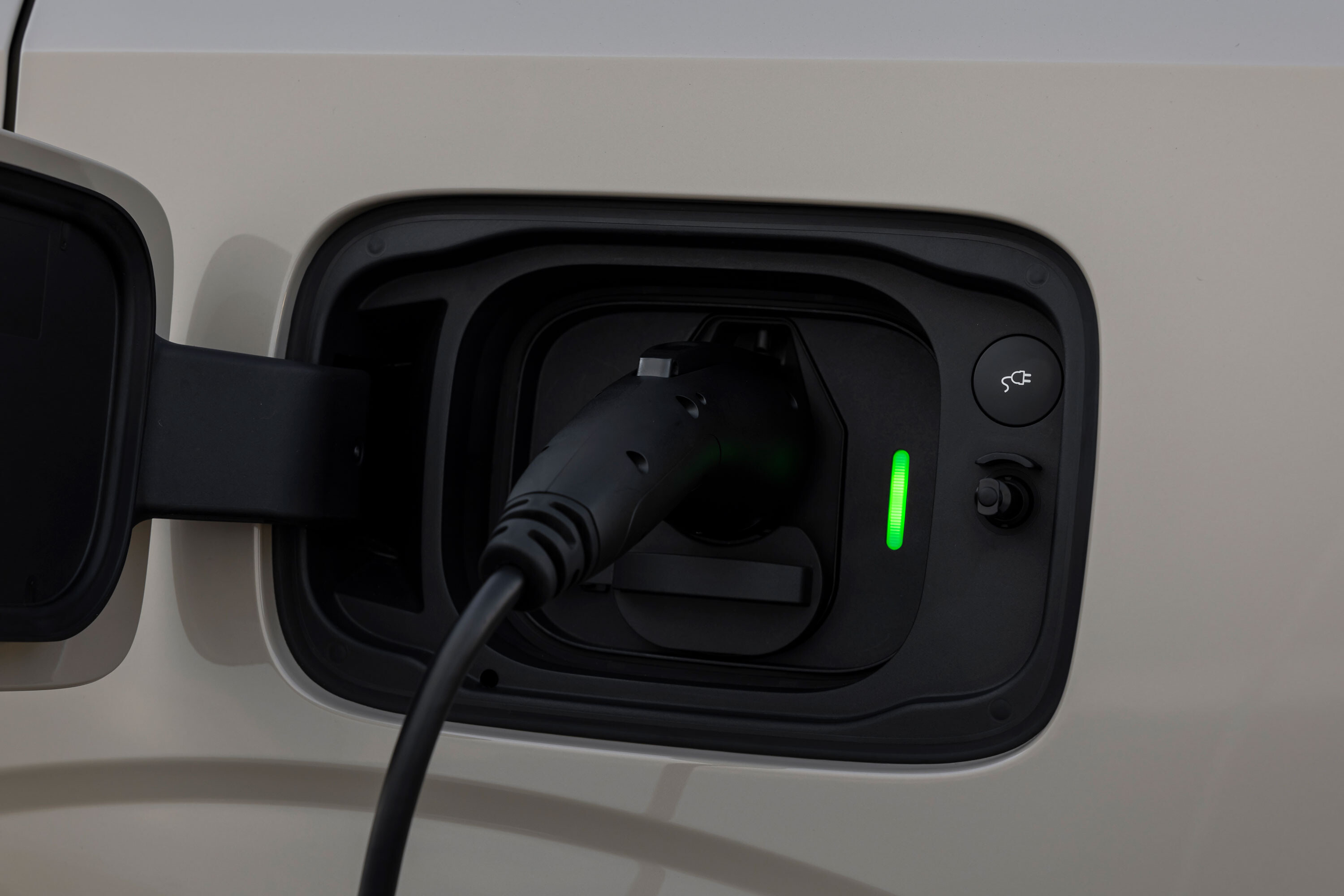
The EX90 is capable of handling up to 250kW DC charging and has a claimed 10-80 percent charge time of 30 minutes. Volvo also claims a WLTP range of 570-614km (depending on options and wheel size) for the dual-motor Performance, though we averaged 25kWh/100km over 239km, which calculates to a real-world range of 428km (when being punted by motoring journos).
Interestingly, that energy consumption and resultant range is almost identical to what we achieved from the closely related Polestar 3 Performance Pack in Spain back in May!
How does it drive?
With its standard adaptive dual-chamber air springs and adaptive damping – at least in Ultra Performance guise – the EX90 proves surprisingly adept at tackling whatever the road conditions throw at it, even when riding on 22-inch wheels.
It only offers two suspension settings (Soft and Firm), whereas the Polestar 3 offers three, and can be height adjusted across a 40mm range (from 210 to 250mm ground clearance), whereas the Polestar 3 offers 60mm. But that’s simply appendage-measuring. What matters is that the Volvo’s suspension set-up really works.
In Soft, it’s nicely level and absorbent yet never mushy (as the name would suggest), and in Firm it’s nicely disciplined and impressively agile in corners, without erring towards what we call ‘dickhead spec’ – meaning stupidly stiff and unyielding, without any subtlety. In this regard, the EX90 treads a fine, yet rewarding line between body control and passenger comfort.
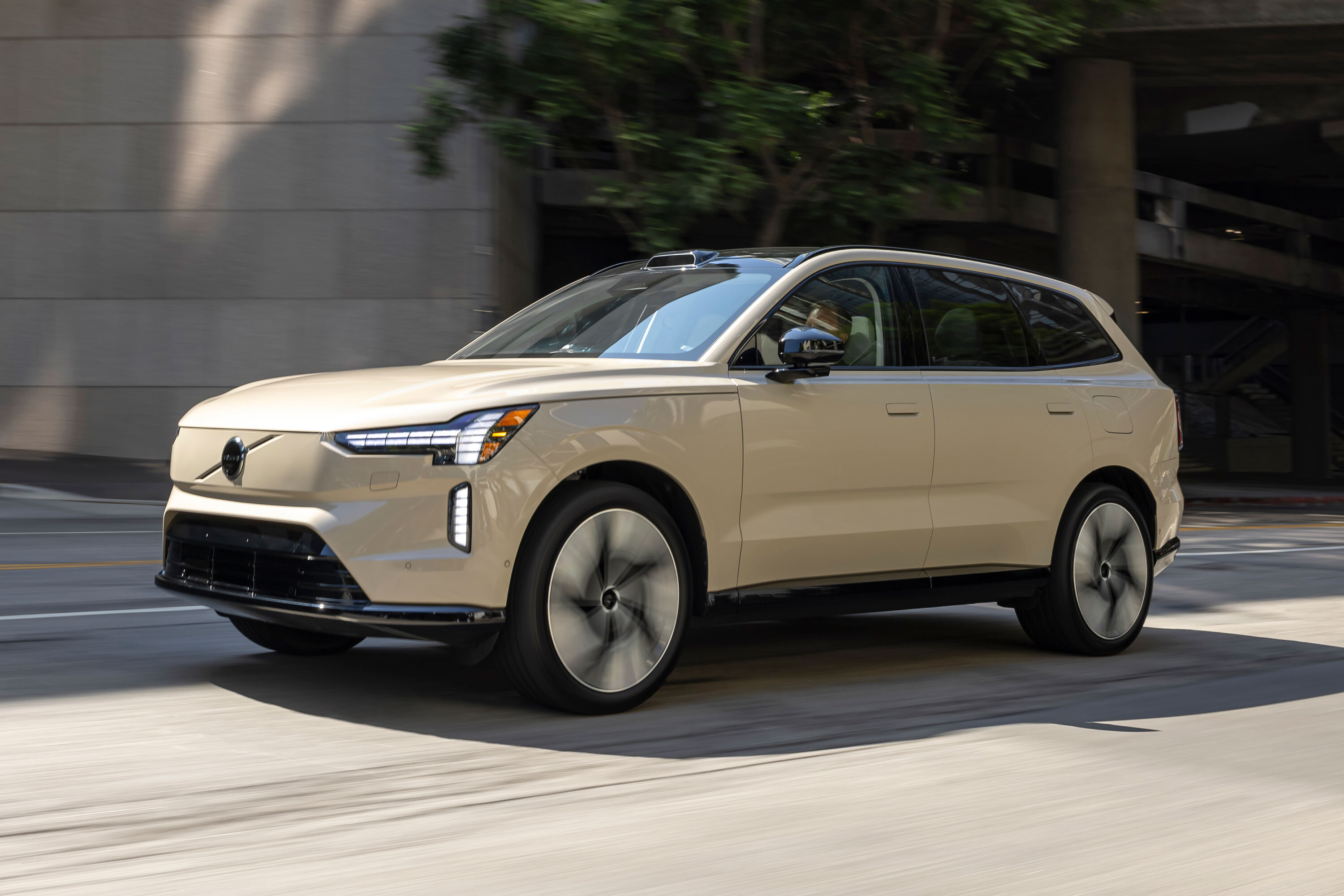
Just like its Polestar 3 relative, the EX90 feels surprisingly lithe for such a hefty beast of a thing, thanks to its low centre of gravity, excellent weight distribution, and the mechanical smarts of its Borg-Warner dual-clutch rear diff that can torque vector up to 100 percent of drive to either rear wheel. The EX90 has a fluency to it – far beyond what the comparatively leaden XC90 T8 offered – and that bodes well for its affinity towards challenging Australian surfaces.
Even its regenerative braking performance is impressive – allowing it to come to a full stop – though having to rifle through menus to access it is annoying, even though you get used to it. For a company so intrinsically bound by its safety reputation, having to delve through five menus to be able to change the suspension mode, for example, is needlessly fiddly and silly.
At least the EX90’s plethora of safety systems work with far greater ease and slickness, offering subtly tuned lane-keep assistance and brilliantly calibrated adaptive-cruise blasting (at 130km/h-plus on Californian highways).
When you turn the lane-keep assistance off, it remains off next time you start the car – meaning there isn’t that incessant need to recalibrate everything each and every time you drive. Even just nudging the gear selector down to Drive to set the cruise speed seems intuitively clever (once you realise that’s how it works).
Is it worth waiting for the 2024 Volvo EX90?
We’ve been waiting some time for the EX90 – almost two years, in fact. It was first displayed in road-ready form in November 2022 but didn’t begin production until mid-’24, initially in South Carolina, and to be followed by China.
And yet the EX90 launch cars still hadn’t completed final calibration, with a multitude of glitches affecting the phone-prioritised keyless entry system, the adaptive cruise operation and even the instrument display in one EX90.
Volvo assured us that final-production EX90s will have these problems nixed, and that future over-air software updates will continue honing the operation of its electronic systems.
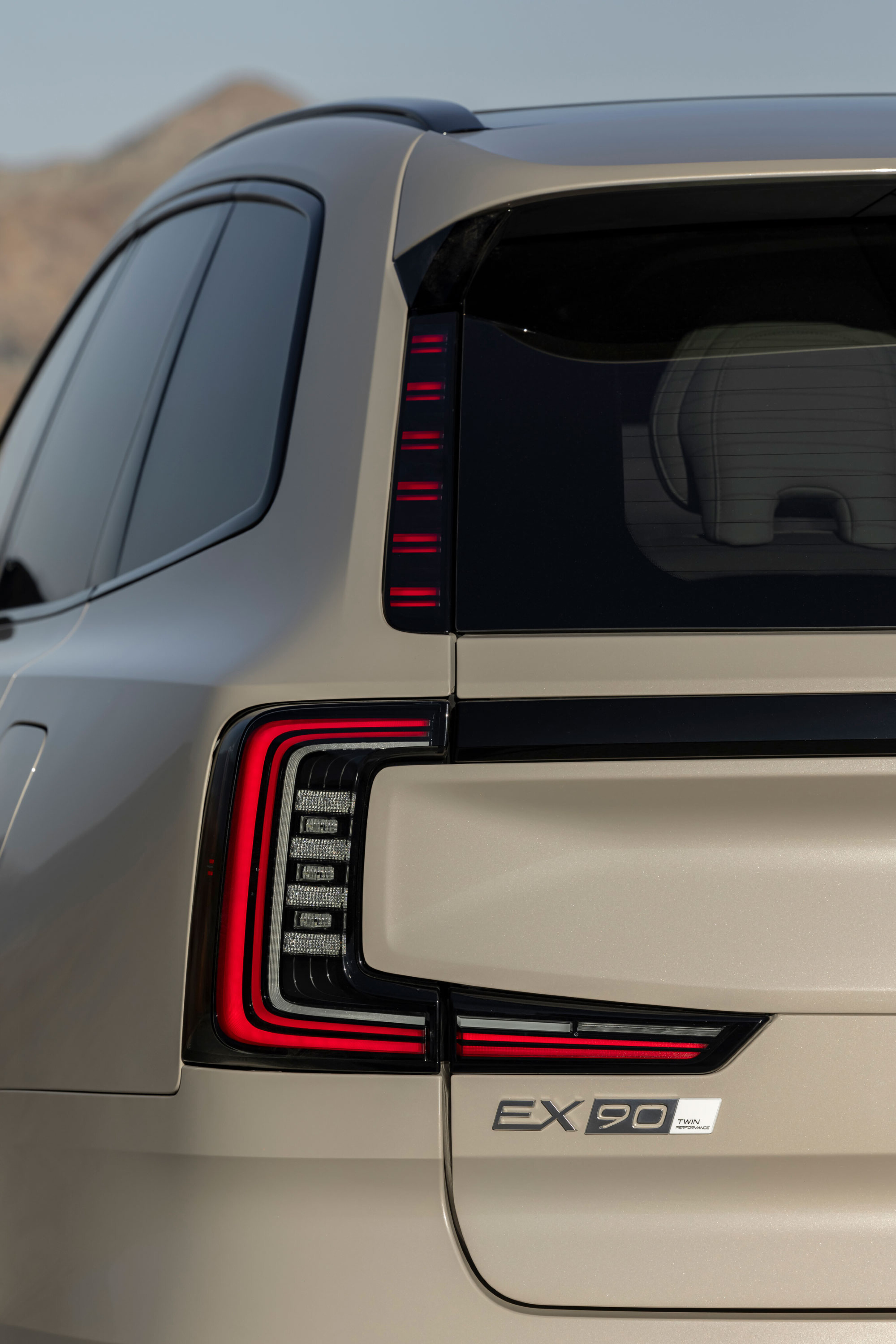
Given that they were taking notes when we gave feedback about the touchscreen-menu complexity of the suspension modes and such, we have confidence that Volvo is listening and is keen to make the EX90 as good as possible.
Expected to be priced around the $130,000 mark (for the Ultra Performance AWD) when it goes on sale by the end of 2024, though possibly even in the $120K bracket, there’s a lot to like about the EX90. Yet arguably its best aspect is the way it drives, and if any area truly conveys a premium level of engineering, then that is it.
| 2024 Volvo EX90 Ultra Performance AWD specifications | |
|---|---|
| Price | $130,000 (estimated) |
| DRIVETRAIN | |
| Electric motors | Two permanent magnet synchronous |
| Battery | 111kWh nickel-manganese-cobalt |
| Drive | All-wheel drive |
| System power | 380kW |
| System torque | 910Nm |
| Transmission | 1-speed reduction |
| CHASSIS | |
| L/W/H | 5037/1964/1747mm |
| Wheelbase | 2985mm |
| Track(f/r) | 1672/1666mm |
| Weight | 2712kg |
| Boot | 669 litres + 46L front |
| Range | 570-614km (WLTP) |
| Efficiency | 25.0kWh/100km (tested) |
| Suspension front | double A-arms, air springs, adaptive dampers, anti-roll bar |
| Suspension rear | multi-links, air springs, adaptive dampers, anti-roll bar |
| Steering | Electric power-assisted, 11.8m turning circle |
| Front brakes | Ventilated disc (400mm) |
| Rear brakes | Ventilated disc (390mm) |
| Tyres | Pirelli Scorpion |
| Tyre size | 265/40R22 (f), 295/35R22 (r) |
| SAFETY | |
| NCAP | Unrated |
| 0-100km/h | 4.9sec (claimed) |
Score breakdown
Things we like
- Persuasive ride/handling blend
- Interesting cabin design and materials
- Competitive performance and range
- Plenty of luggage space
Not so much
- Feels cost-cut in some areas
- Lacks XC90’s cabin storage
- Average room for a seven-seater
- Derivative styling
We recommend
-
 News
NewsVolvo EX90’s aero credentials revealed ahead of next week's release
It’s now just seven days until Volvo unveils its new all-electric large SUV, and there’s another teaser to talk about
-
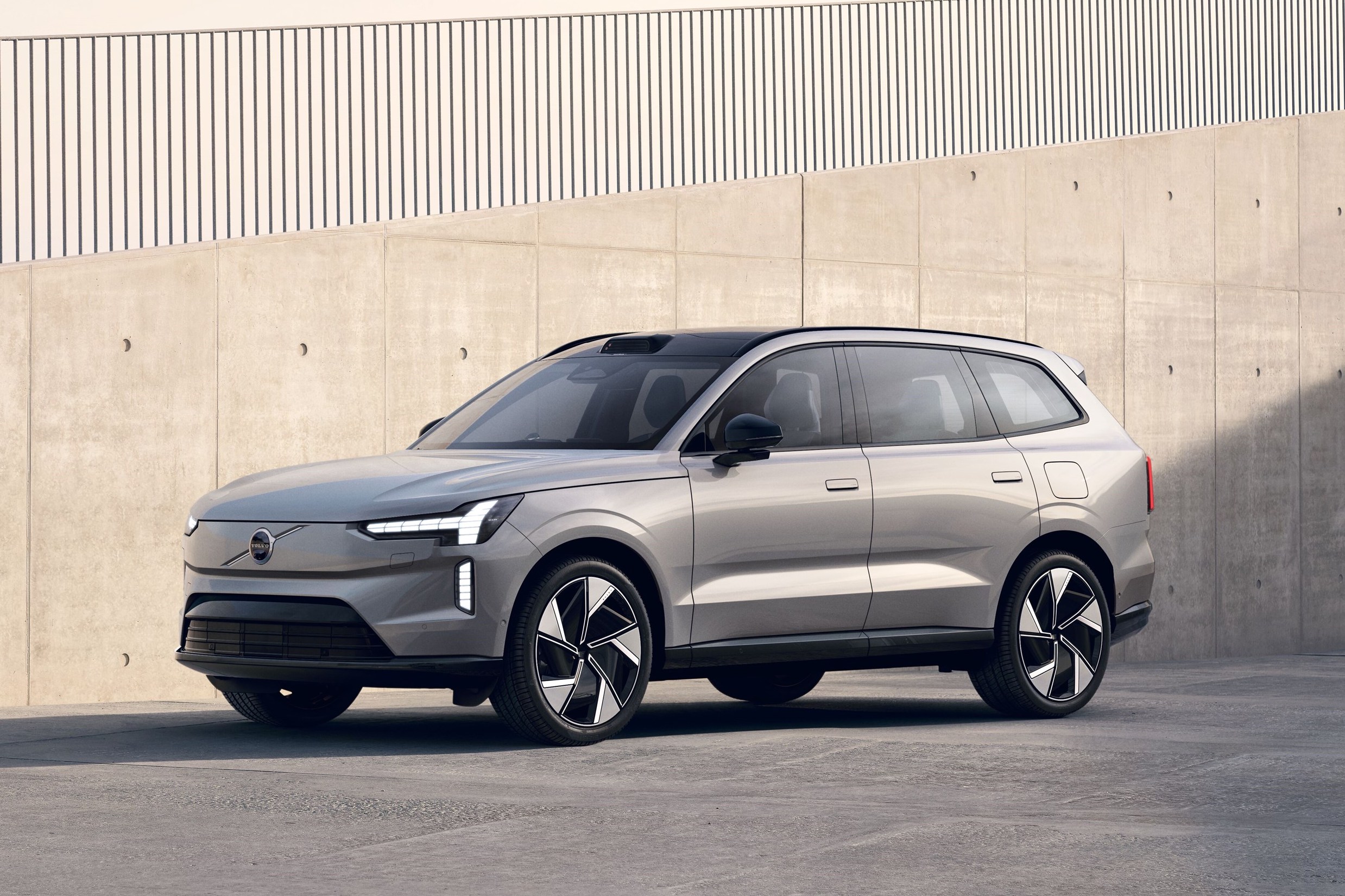 News
News2024 Volvo EX90 electric SUV revealed
Volvo has revealed the EX90, an all-electric alternative to the flagship XC90 offering self-driving capability and powerful dual-motor all-wheel drive
-
 News
News2025 New Car Calendar: All the new cars coming to Australia
Take a look at our list of what is expected to launch in Australia in 2025 – plus those we might not see locally just yet

